LABELS: BIKERS
Original Works by Tim Telkamp
In his portfolio Labels: Bikers, Tim Telkamp explores the dichotomy that exists between the personal labels we use to make introductions to “outsiders” individually or as a group, and contrasts that to the labels that “outsiders” might apply when seeing that group together.
“You may have seen the nine of us rolling down the road together. We ride together often, coming together all over the Southeast United States to go kickstands up. A few years ago, some of us rode out to South Dakota, then up into Montana and then down to Colorado. That trip alone was over 3,300 miles in just a handful of days, for some of us it was all on two wheels. We’ve ridden together for many thousands of miles and no doubt have thousands of more ahead of us. I know some will label us “bikers” when we ride by, although I heard a member of an organized motorcycle club (real bikers) say he’d label us “posers”. A friend told me she would label us “Doctors and Lawyers in their midlife crisis” if we passed her on the road. Whatever label you put on us will vary by who you are.
Motorcycles, though, are not what brings us together. I am the youngest of seven children and have been married for nearly thirty years. Family is a cornerstone of life. I am also a motorcycle enthusiast, having bought my first bike at fifteen and have been on a motorcycle nearly my whole adult life. If you see us along the road and ask me or any one one of us, the label you will most certainly get is “family”. Because our bonds are not just the kindred brotherhood and sisterhood that most motorcyclists feel, but family in the most genuine way because in these plates you will find my wife and son, my sister, two of my brothers, my sister-in-law, and my nephew. The shared experience of riding motorcycles is secondary to our shared history as a family.
I have been taking photographs for nearly my whole life, and for more than a dozen years have been making wet plate collodion images and teaching workshops on this historic early photographic process. Sally Mann is one of my artistic heroes and in her book Hold Still (2016, Back Bay Books) she puts to words a long held notion of mine, that photographs rob us of our memories. When I’m with family I put my camera down so I’m not separated from the moment by a lens. And so this is my first project where I’ve pointed the lens at those closest to me, and I’m very grateful for their indulgence and support. ”
TINTYPES: A COMMUNITY PORTRAIT
Selective works by Tim Telkamp and Leah Sobsey
Tintypes: A Community Portrait is a collaboration between Leah Sobsey and Tim Telkamp. In 2017, the pair were the recipients of the Click! Photography Festival PIC Grant (Programming Innovations for Click). The goal was to engage with the community and bring people together through photography. The idea was similar to that of the book mobile or the ice cream truck–essentially, people were invited to come out of their houses and onto the street to engage with each other and in the process create a large community portrait.
© Tim Telkamp, Carmen | Enlargement of Tintype on Aluminum
© Tim Telkamp, Jim Lee | Enlargement of Tintype on Aluminum
The project spanned a few weekends, with the artists routinely taking their mobile tintype unit out into the community. Setting up across the Triangle in downtown Durham, North Carolina one day, on another day at a Habitat for Humanity worksite, and finally, to end the project, at a residential warehouse/art-studio location. While they had hoped to entice a representative few from each location to participate, they found themselves greeted with overwhelming interest from the entire community. Portrait sessions were usually filled by noon for the whole day, with some electing to wait in line with the hope of getting a tintype made. The artists pushed their limits, wishing to accommodate everyone possible. The resulting body of work, over 80 tintypes in total, exceeded the vision of the grant as well as their expectations. A smaller selection of these tintypes were chosen for display at the Southest Museum of Photography
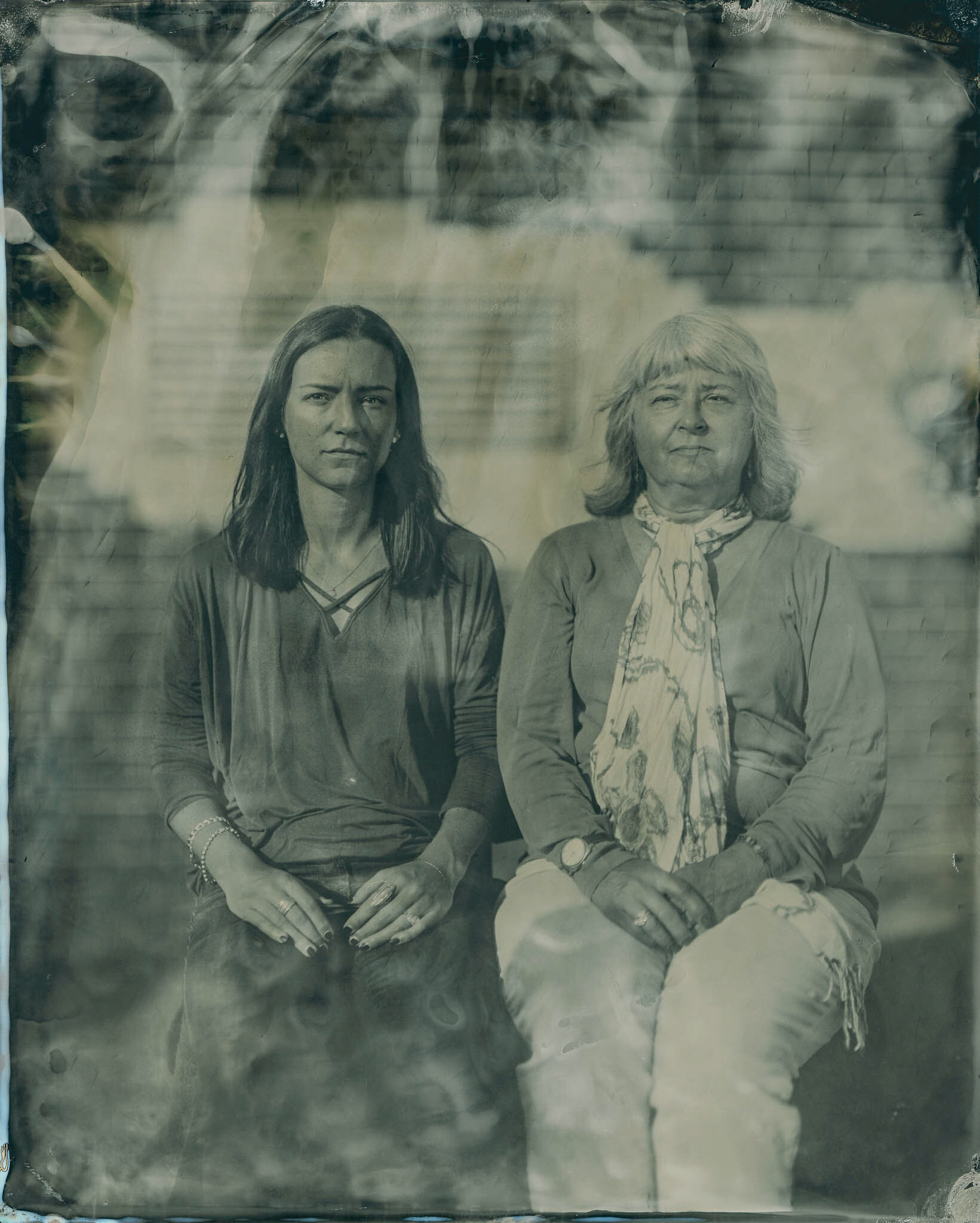
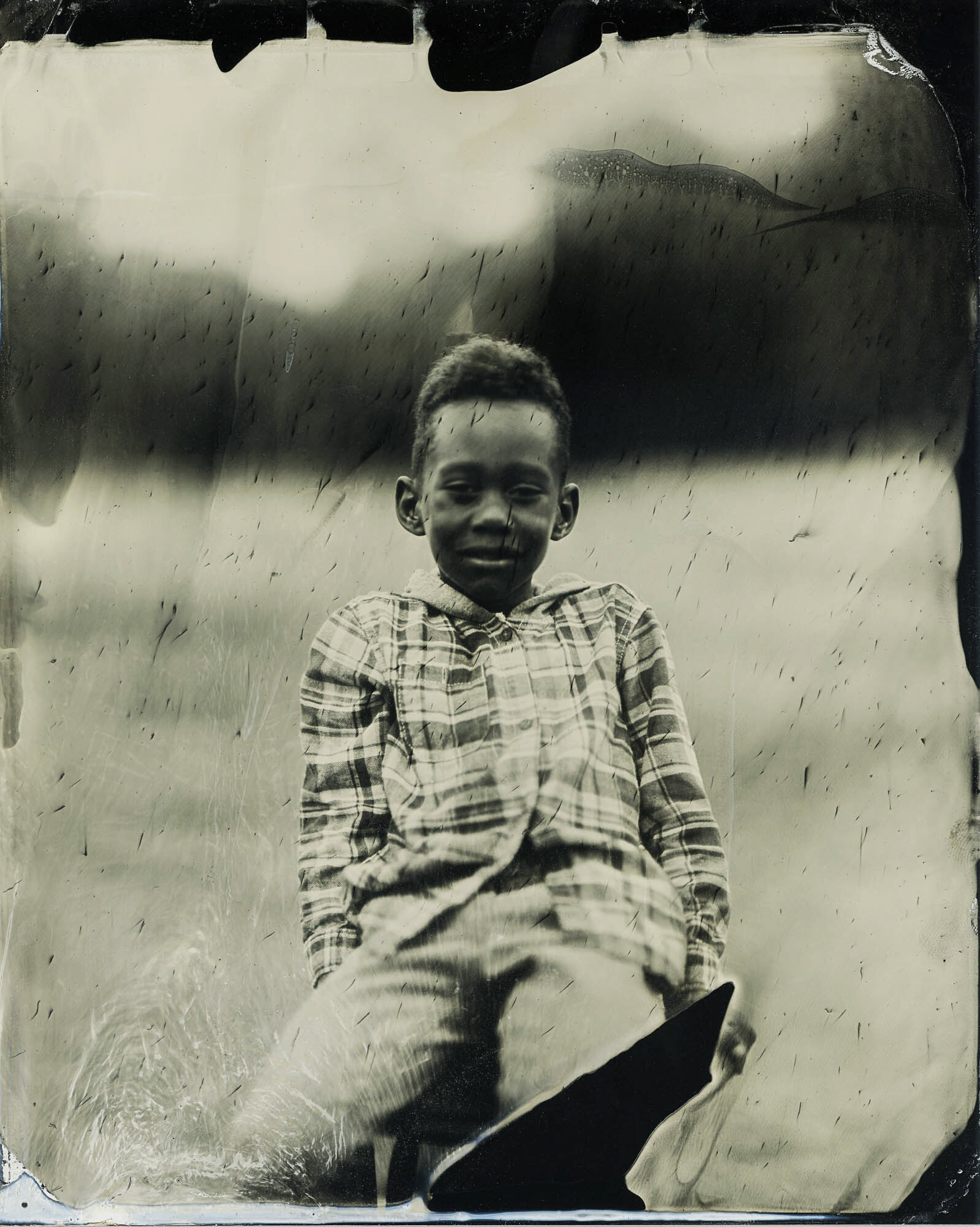


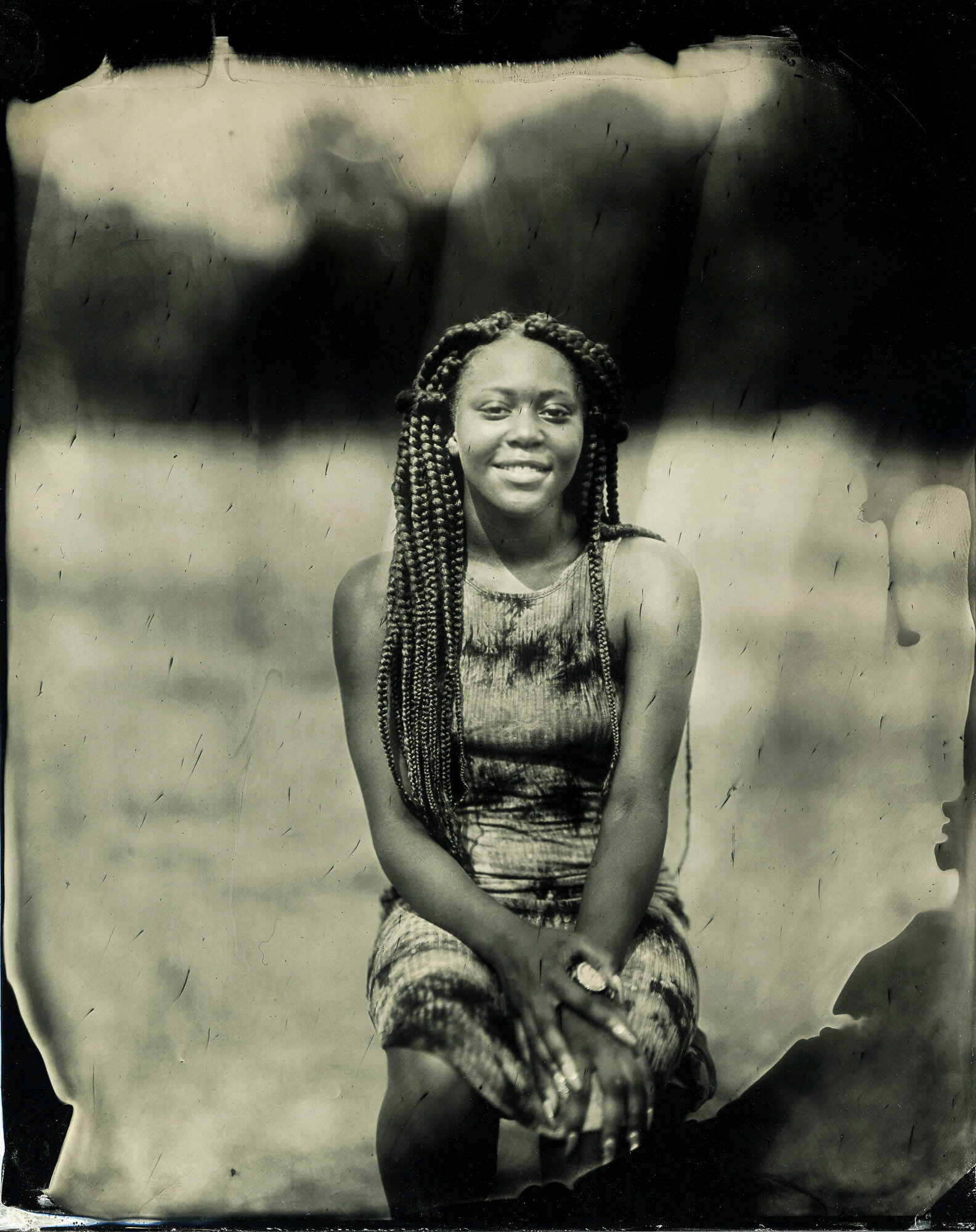
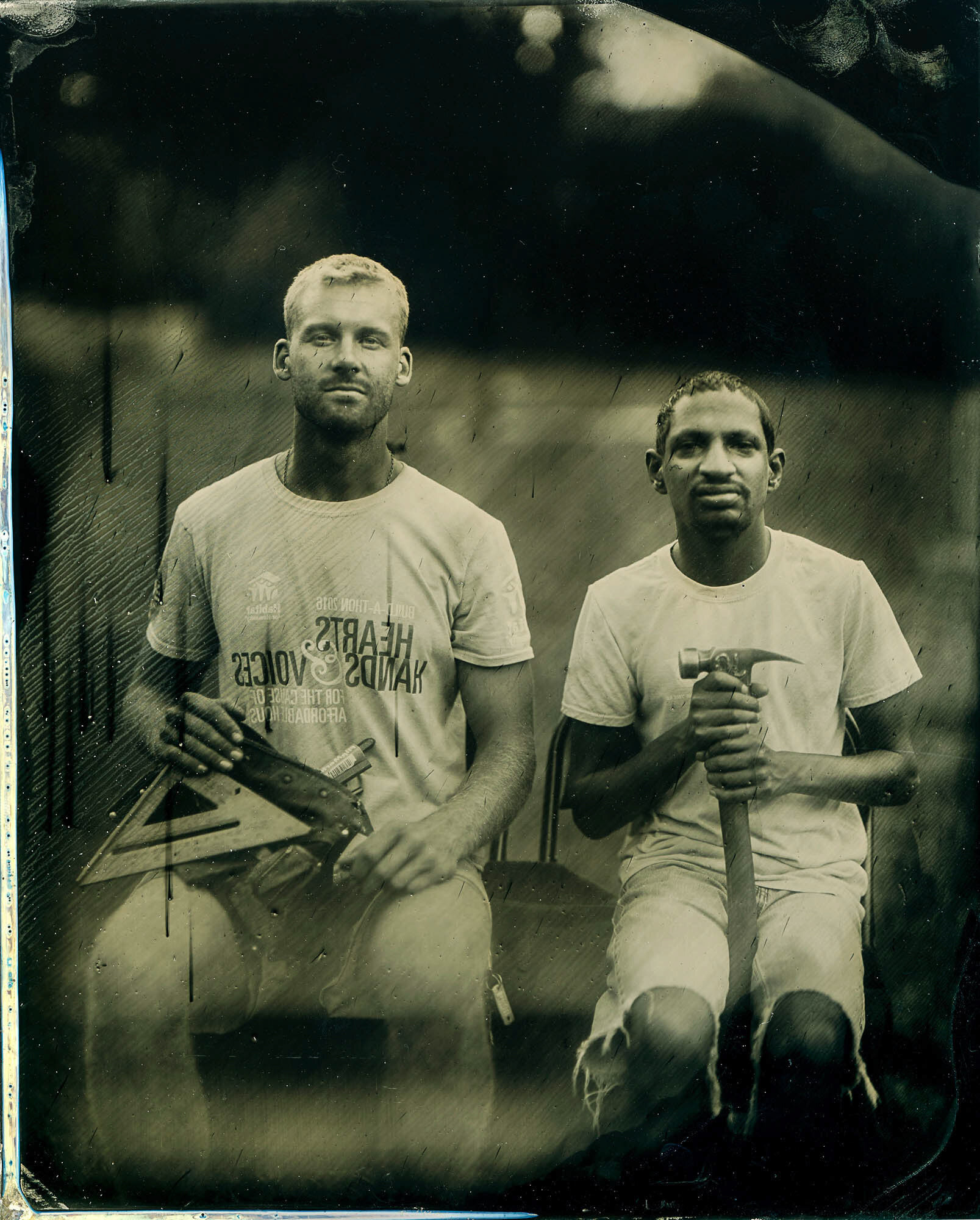
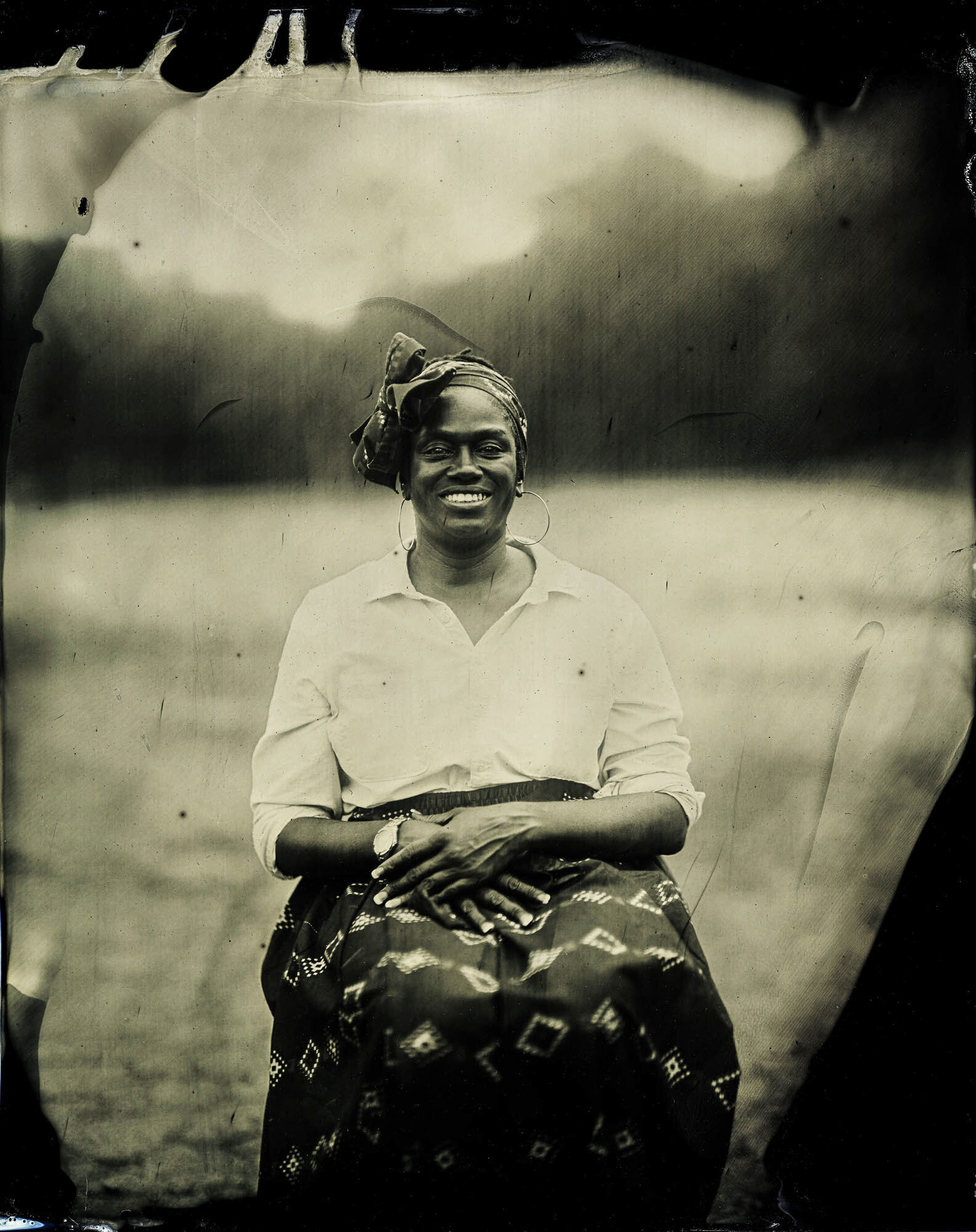
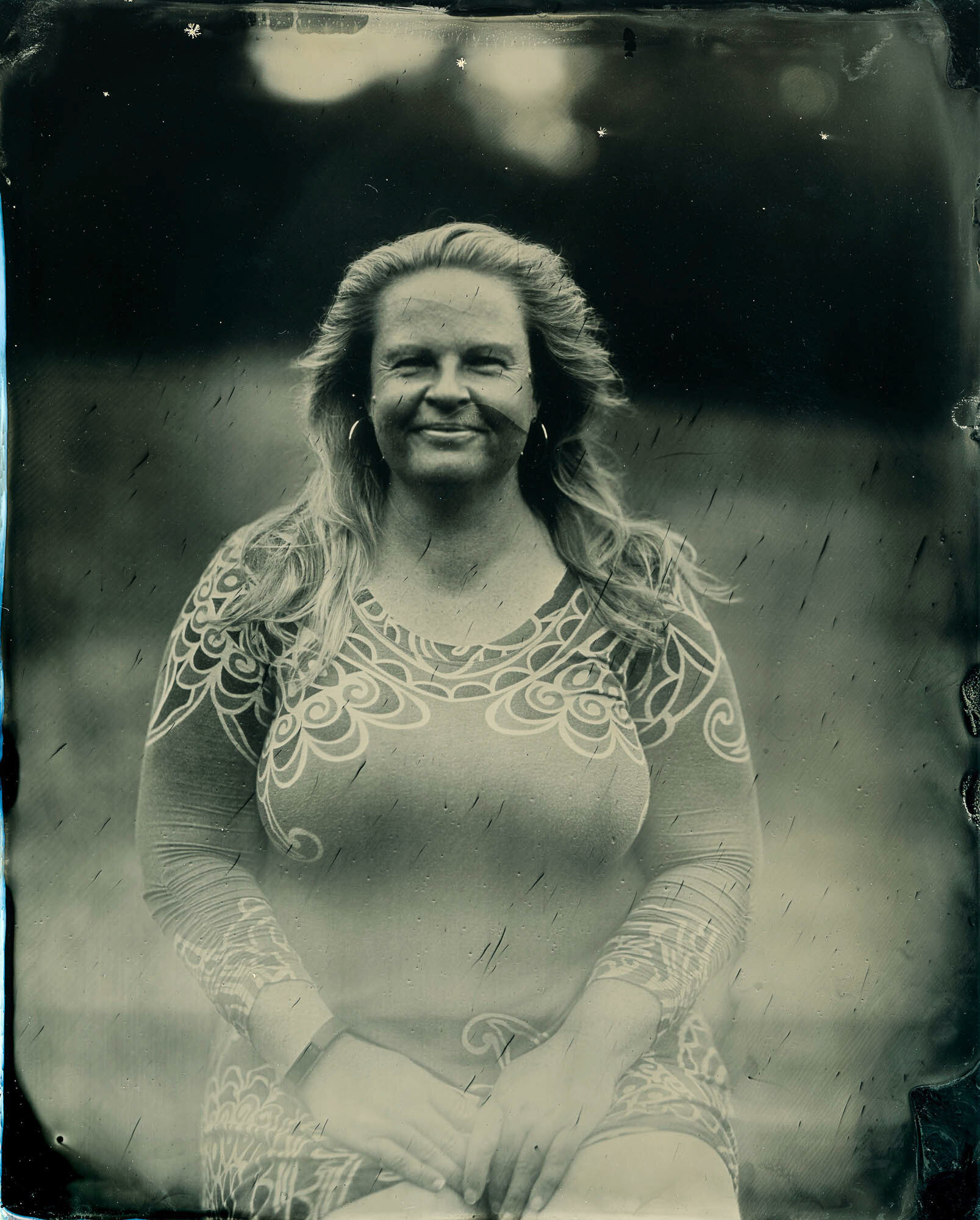
All images © Tim Telkamp and Leah Sobsey
THE TINTYPE PROCESS: AN OVERVIEW
The traditional tintype process involves a light-sensitive collodion emulsion (containing suspended silver halide crystals) coated on a thin sheet of metal and treated with a potassium cyanide fixative for permanence.
Did you know? First formulated in 1846, collodion was, and still is, used as a medical dressing. It is made from cotton soaked in nitric and sulfuric acids that is thoroughly washed and dried, then dissolved in ether and alcohol. When allowed to dry, collodion leaves a clear, thin, tough flexible coating. In 1851, Frederick Scott Archer suggested it was a perfect vehicle to hold light sensitive chemicals on glass for making negatives. Also called "cellulose nitrate," it is similar to the base used later for making the first flexible film.
Chemicals for wet-plate process (dated 1854) in glass bottles. Comprising 1. nitrate of silver solution, 2. acetic acid, 3. chloride of gold.
The traditional method for creating tintype photos utilizes a wet collodion process. Collodion is a syrupy solution of cellulose nitrate in ether and alcohol. In the case of tintype, the wet collodion is carefully applied to a thin iron plate–which must be tilted by degrees–allowing the photographer to coat the entire surface with the solution.
Any excess collodion is drained back into its bottle.
While the plate is still wet (before the ether and alcohol evaporate from the collodion) it must be dipped into a solution of silver nitrate in a darkroom (under red or deep amber light) where it remains for a few minutes. At this time the silver nitrate bonds with the iodides and bromides in the collodion to make light-sensitive silver halides on and just under the surface of the collodion.
While the plate is in the silver nitrate "bath," the camera is set up and focused on the subject.
The light-sensitive plate is removed from the darkroom in a light-proof holder and then attached to the camera. A "dark slide" or covering is pulled to expose the plate to the inside of the camera. Exposure is made by removing the lens cap. It can take approximately a second or two (or longer) to make the proper exposure, depending on the age of the collodion, type of lens used, and the quality of light on the subject.
After the exposure is made, the plate holder is secured, removed from the camera, and brought back to the darkroom. The plate is removed from the holder and the developer, a dilute solution of ferrous sulfate (iron), acetic acid, and alcohol are gently poured onto the collodion side of the plate and rocked. The image gradually becomes visible within a few seconds as the areas exposed by light entering the camera are converted to metallic silver. When development is complete in a minute or two, the developer is removed by thoroughly washing with clean water. The plate can now be safely taken out from the darkroom.
The developed plate is placed into a tray of sodium thiosulfate (also known as sodium hyposulphite) or potassium cyanide, to remove the unused silver halides. It is then washed well with fresh water and allowed to dry.
Once dry, it is coated with a protective varnish made from gum sandarac, alcohol, and oil of lavender. The sandarac varnish is extremely sticky until thoroughly dried.
CENTURY STUDIO NO. 7 FILM CAMERA
Capturing Modern Portraits in Classic Style
“Big Al” is a Century Studio No. 7 8x10 film camera built sometime before 1910. This is one of five working 8x10 format cameras that I use regularly for wet plate collodion and traditional film photography. Some of the “Tintypes: A Community Portrait” plates in the gallery today were made with Big Al, while others were made with a Seneca 8x10 or a Kodak 2D, all of similar vintage.
While none of these cameras were originally intended for wet plate work, I have hand made my own plate holder system and fitted it to each of these cameras.
Big Al was a gift from my dear friend and the amazing photographer, Catharine Carter of Chapel Hill, NC. She and I had made a trip to visit a mentor in West Virginia. We found Al as part of an estate sale and he came back to her studio in my truck. She used him to make 8x10 negatives for platinum/palladium, but when she retired and downsized her studio he needed a new home and she wanted Al to keep working. So here he is, still making negatives for alternative process work and now making wet plate collodion plates too.
© Tim Telkamp, The Haircut | Diptych of tintypes on aluminum, 2019






